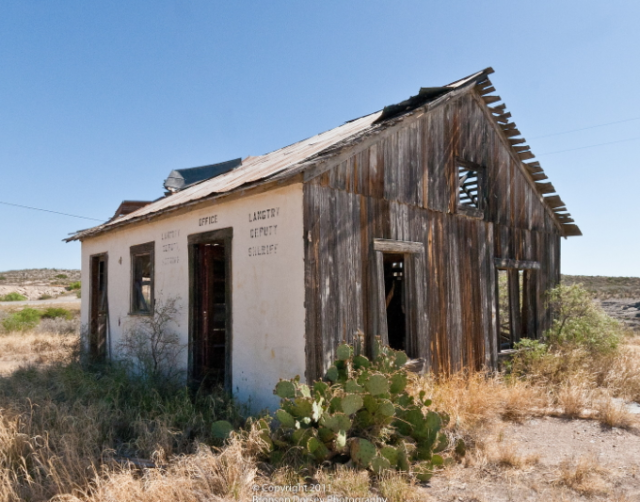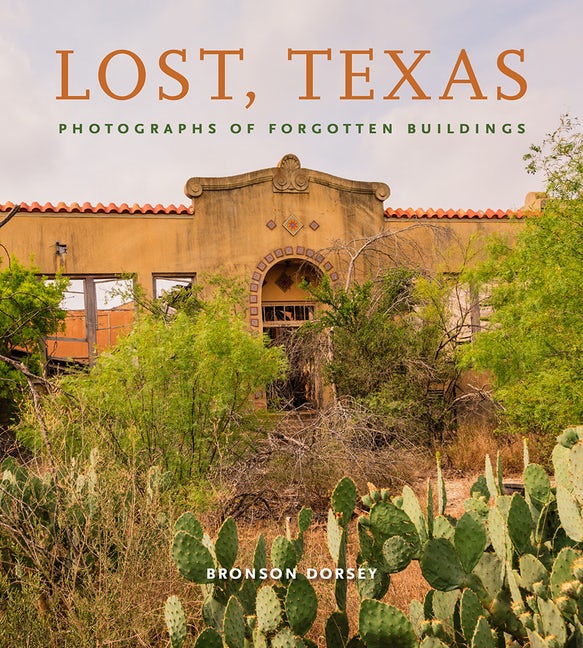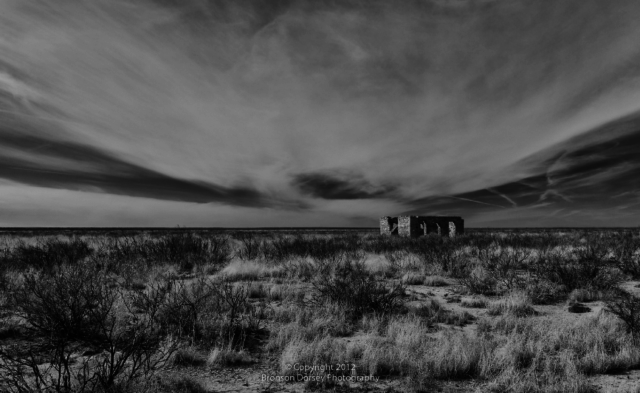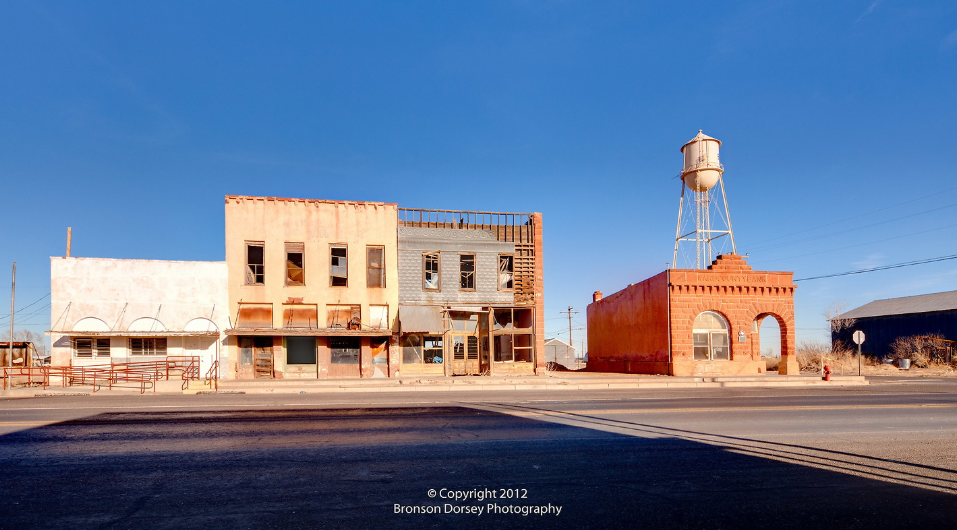Lost, Texas Documents ‘A Reminder of Our Mortality’
Share News:

This abandoned building was once the deputy sheriff’s office in Langtry, Texas, and is one of several photos photographer Bronson Dorsey captured in his quest to create the book Lost, Texas (photos courtesy Bronson Dorsey).
We make no secret about our love history here on SecondShelters.com, although the bulk of our attention tends to skew toward the adored, restored, and lovingly preserved.
But earlier this year, Texas photographer Bronson Dorsey’s book, Lost, Texas: Photographs of Forgotten Buildings, brought to light another dimension of Texas history — the forgotten parts that were left to the march of time and elements.
“In many cases for the buildings and the towns in the book, the towns began to fail when younger people moved out for jobs in the city,” Dorsey told us during a phone chat. “And there was an economic base to support the businesses and towns in the beginning, thanks to the railroad often, but eventually, they got passed by the interstate.”
Dorsey’s book had its genesis in a drive from Big Bend to Austin in 2009, when he stopped in Langtry, Texas.

Langtry was once a bustling town that benefited from being along a rail line. Around the turn of the century, Judge Roy Bean’s schoolboy crush on British actress Lillie Langtry spurred a claim that the town was named after here — a claim that most of the town likely knew was pure balderdash, but brought the actress to the town briefly anyway in the early 1900s. But Bean, who died nearly a year before, would never get to meet the object of his affection.
But the town looked vastly different when Dorsey drove through, with abandoned buildings dotting the landscape.
That sent the retired architect and professional architecture photographer on an eight-year quest all over the state, taking pictures of the long-abandoned homes, buildings and railroad depots that created bustling small towns, only to be rendered obsolete as railway made way for highways, and highways made way for interstates.

Abandoned stone building off Hwy. 302 between Kermit and Mentone.
But not all his photos are from rural Texas — some of his finds are plopped in the middle of larger cities, too.
“I was pleased when I spoke to Preservation Dallas a couple months ago to find out that that old school in Eagle Ford has now been purchased by a developer and is being restored for his office,” Dorsey said.
Some are also not in some sort of decrepit mise en place, but have instead been repurposed by preservation-minded organizations into museums, homes, and other uses.
“So you know there’s some there’s every now and then there’s a bit of good news about buildings being saved,” Dorsey said. “Unfortunately more often than not they’ve just allowed them to wither away or somebody takes action to tear them down.”
Bronson said that while there seems to be a lot more encouragement and incentive to restore and preserve in larger cities, in smaller towns, lack of resources can often stymie efforts.
Sites in the book include a once-busy gas station near the Yates oilfield, a silver mine, a country schoolhouse, and a Coca-Cola bottling plant.

Downtown Barstow
We’ve had occasion to step into the abandoned homes and buildings that represent the state’s past, and there’s certainly an almost indescribable sense of place as you carefully make your way through these abandoned structures. Dorsey agreed.
“You certainly get a sense that these buildings are a representation of people’s hopes and dreams,” he said. “They spent their money into building things. They ran a business or operated a school or it was a church.”
“And so yeah you get this,” he continued. “It does sound crazy but you do get a vibe — I wouldn’t say it’s like a ghost type thing. but you just it’s a very lingering feeling you know that that you can feel what happened there and I think I got it.”
Despite spending several years documenting the slow demise of some of the structures that held so much of the state’s more ordinary history, Dorsey remains philosophical about the life cycle of such structures — even our modern ones.
“Every year you see a glimmer of hope,” he said. “Some of these small towns are coming back, particularly the ones that are that are close to a bigger city.”
“So there are glimmers of hope that small towns or are coming back and they are, in many cases, more attractive to either retirees or two younger people who want to raise a family but are getting priced out of the housing market in the city.”
“I think if anything those buildings are kind of a reminder of our mortality when it comes to cities,” Bronson said.
His work was first a blog, where he cataloged his shoots and the history behind the structures he photographed. He eventually began working with the Texas A&M Press to craft his work into a book, which was released in May, and quickly sold out. A second printing is due out in January.
“They printed 1,500 books and I just called this week to get the final 12 that they had because I’ve got to hoard them for a book talk in January,” he said, with a chuckle. “I didn’t want to show up empty-handed.”


Love it! Watch for the restoration. Of the 1861 house once known as Collinwood but now returned to the Haggard family and set to be known as Nannie Kate’s (Mrs Clinton Shepard Haggard) who owned the house in 1862 until it left the family in 1938.